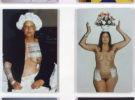El objeto del siguiente ensayo parte del interés por indagar sobre la ocultación, por explorar los recónditos parajes que conforman el imaginario del retrato fotográfico de las últimas tres décadas, y analizar cuál ha sido su evolución desde sus inicios hasta la actualidad.
En las observaciones que se exponen a continuación, subyace la idea de que en las últimas décadas ha habido un gran incremento de productos culturales que retratan aspectos y tipologías humanas categorizadas como outsider.
En el compendio de representaciones sobre las que se argumentará, se advierte cómo permanece extinto cualquier resquicio de crítica social o cuestionamiento moral, por lo que el retrato queda planteado desde un enfoque que lo estetiza de forma banal. Si durante décadas, la fotografía ha sido la encargada de rescatar los entresijos de las periferias sociales bien como suceso periodístico o bien como arte; a partir de finales del siglo XX también harán lo propio los medios de masas, promoviendo un transvase entre tales contenidos y sus formas de representación
que conducirá a que el retrato de lo outsider se desmembre de su condición de marginal, para difundirse públicamente como producto pop y consumirse como un controvertido producto de ocio cultural.
Abstract
The subject of the next essay, emerges from the interest for investigating the hidden, for exploring the out-of-the-ways places that make up the imagination of the photographical portrait in the last three decades, and then to analyze its development from the beginning to date.
In the observations next shown underlies the idea that in the last decades has been prompted the emergence of cultural products that portray human aspects and typologies categorized as “outsider”.
In the compilation of representations that will be discussed, remains extinct even the slightest concept of social critic or moral questioning, while the portrait is planned from a chosen point of view that gets it aestheticized in a banal way. Even if for decades, photography has had the role of collecting the insight of the social periphery both, as a journalistic matter or as an art, from the end of the twentieth century that work will be done also by the mass media, encouraging a switch among those subjects and the ways they are shown, that will lead to tear apart that portrait of the Outsider from its marginal condition to be publicly released as a “Pop” product being consumed as a controversial product of cultural leisure.
Key Words
Portrait, photography, outsider, triviality.








